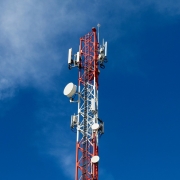Satellite Fixed Service Gains New Frequency Division in Ku Band
At the 2015 World Radiocommunication Conference (WRC-15), countries made a decision after intense discussions to increase the main service frequency allocation in the Ku-band to the fixed-satellite service (for geostationary satellites only), ie an increase of 14.5 GHz in the first quarter. ~14.75GHz (upstream), 13.4GHz~13.65GHz (downstream); the second zone increases 14.5GHz~14.75GHz (upstream); the third zone increases 14.5GHz~14.8GHz (upstream). Among them, the original fixed-satellite service in the third region and 14.5GHz~14.8GHz frequency band in the frequency band of 14.5GHz~14.75GHz is only used for the satellite broadcasting service feeder link (AP30A), but not for the conventional communication satellite. This WRC-15 decision removes this restriction for countries that include new resolutions (including China). According to the decision of WRC-15, the above-mentioned frequencies are used for conventional communication satellites, which can greatly alleviate the severe lack of spectrum in the Ku-band spectrum of the fixed-satellite service, which will have an important impact on the future development of the satellite communication industry.
The fixed-satellite service is the type of service provided by most conventional communication satellites. In particular, satellite communication services such as VSAT communication, live television to home, television program transmission, and emergency communication are widely provided for geostationary satellites. The fixed-satellite service mainly uses the C and Ku-band spectrum resources. With the large-scale use of the C-band by the terrestrial mobile communication IMT system, the Ku-band has become the main frequency band for the expansion of spectrum resources by the fixed-satellite service. However, from a global perspective (including China), the frequency resources of the conventional fixed-satellite service in the Ku-band have been fully utilized. In recent years, services such as video distribution, broadband networks, Internet services, and satellite news gathering have triggered rapid growth in demand for Ku-band spectrum. In addition, satellite transmission is usually symmetrical in the uplink and downlink (ground-to-space and air-to-ground), that is, the uplink and downlink need to use the same bandwidth spectrum, and in the frequency division before WRC-15, ITU 2 and China The Ku-band downlink spectrum of the conventional fixed-satellite service in the 3rd district is 200MHz and 300MHz higher than the uplink. To this end, the WRC-12 Conference decided to establish the 1.6 issues to conduct compatibility studies in the Ku-band, and the WRC-15 Congress considered increasing the possible primary service allocation for the fixed-satellite service to make more efficient use of spectrum resources and effectively mitigate the fixed-satellite service. The situation of tight spectrum resources in the Ku band.

The main problem that needs to be solved in the new service division in a certain frequency band is the compatibility and protection of the original service of the newly classified service to the frequency band. After more than three years of research, the 1.6 issue was before WRC-15, and the main candidate bands recommended by countries were 13.4GHz~13.65GHz (downstream) and 14.5GHz~14.8GHz (upstream). The former needs to solve the protection problem of the Earth exploration service (EESS) in the same frequency band, while the latter needs to solve the protection problem of the aeronautical mobile service (AMS) and the satellite broadcasting service feeder link (AP30A) in Zones 1 and 3. As a satellite application country, China has the need for new fixed-satellite service allocation in the above-mentioned frequency bands, but the first thing we need to consider is the protection of existing services. In the satellite earth exploration service in the 13.4GHz~13.65GHz frequency band, the proposed frequency of the precipitation measurement radar carried by the Fengyun-3 precipitation measurement satellite planned by China includes this frequency band. The spaceborne radar has high sensitivity, and the received surface reflected echo is susceptible to reflection interference from the downlink fixed service of the satellite, which may result in degradation of the quality of the detected data. In order to protect China’s future precipitation measurement radar system, China has proposed three specific protection measures for WRC-15 input manuscript. In the discussion of this conference, only China clearly proposed to appeal, and the electromagnetic environment protection situation of precipitation radar in China is very serious. However, considering the global nature and demand of the Fengyun-3 precipitation measurement satellite, in order to maximize the protection of China’s precipitation measurement radar, the experts of the China Meteorological Administration actively argued and actively communicated at the meeting. The final meeting decided at 13.40GHz. In the ~13.65 GHz band, the new downlink fixed-satellite service is divided, and the three specific measures proposed by China to protect the Earth-satellite service are adapted to realize the protection of China’s advanced precipitation measurement radar. The protection of satellite broadcast service feeder links (AP30A planning and list) in the 14.5GHz~14.8GHz band is also a key concern of delegates in China. During the formal discussion and consultations at the meeting, the representative of our country put forward new measures to better protect AP30A based on the AP30A planning and list specific protection measures recommended by China in the CPM report. Under the efforts of our representatives, the new business division plan adopted by the meeting included the AP30A protection measures recommended by China.
The WRC-15 has had a very heated debate on the protection of another existing service, the aeronautical mobile service, in the 14.5 GHz to 14.8 GHz band. Since the frequency of use of aeronautical mobile systems in European countries partially overlaps with the above-mentioned frequency bands, the relevant countries in the United States and Europe oppose the new division in the frequency band because the uplink of the fixed-satellite service may interfere with the aeronautical mobile service, and the scheme is continually modified to satisfy the aeronautical mobile Business protection requirements. At the meeting, the representative of China also proposed the minimum aperture limitation of the uplink fixed antenna of the fixed-satellite service and appropriate protective measures for the maritime aviation mobile service and was adopted by the conference. In the end, after the conditions including the protection of the use of the aeronautical mobile service by aircraft flying in international waters and the number of countries that can set up uplink stations for the fixed-satellite service, the countries reached a compromise after consultations and accepted satellites in the band. A fixed frequency division scheme for fixed services.
Under the guidance and support of China’s radio authorities, the final result of WRC-15’s 1.6 issues has not only realized the protection of China’s existing business but also obtained a new frequency division for China’s satellite communication industry, which has formed a favorable advantage for China. Participation results. Due to the late start of China’s space business, under the background of the world’s countries occupying satellite orbit spectrum resources, the lack of spectrum resources for conventional satellite communications is one of the main reasons restricting the development of China’s satellite industry. This WRC-15 decision to increase the frequency allocation of fixed-satellite services on a global scale will play a positive role in promoting the development of China’s satellite communications industry.
From:http://www.hj-antenna.com/





Leave a Reply
Want to join the discussion?Feel free to contribute!